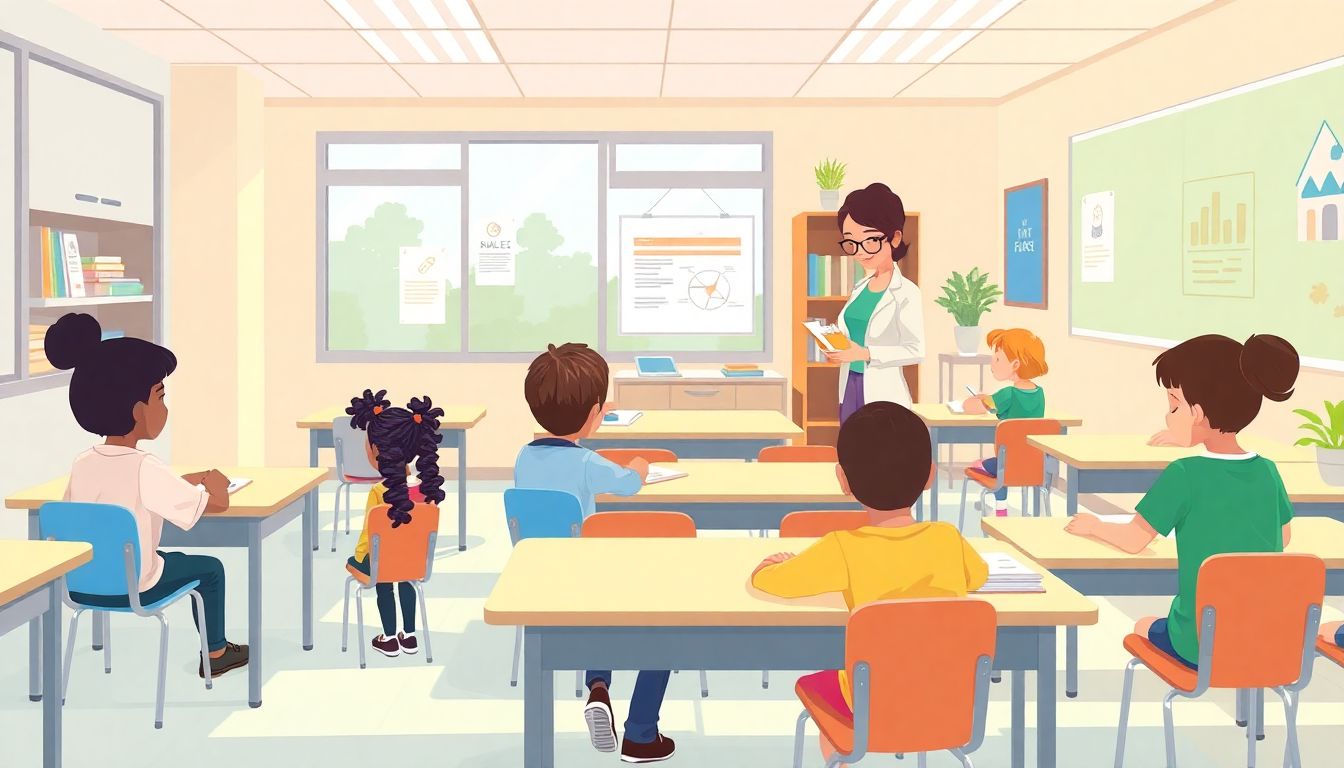It can be tough navigating the world of education when you’re trying to accommodate neurodiverse learners. You might feel overwhelmed by the myriad of needs and struggling to find ways to engage everyone effectively. You’re certainly not alone in this! A lot of educators share the same concerns about making their classrooms more inclusive.
But don’t worry—if you stick around, you’ll discover some practical strategies to adapt your courses and truly make a difference for neurodiverse students. By implementing the right tools and approaches, you can create an environment where every learner feels valued and can thrive.
We’ll explore various effective methods, from understanding neurodivergent students better to leveraging adaptive technologies. Get ready to dive into a world of tips that will help you foster a more inclusive and supportive space for all your learners!
Key Takeaways
- Adapt your courses by gathering student input and using diverse teaching methods to cater to different learning styles.
- Understanding neurodivergent students’ needs enhances their educational experience; learn about specific conditions like ADHD and Autism.
- Set clear, achievable goals and break tasks into smaller steps to help students manage their workload effectively.
- Incorporate adaptive learning technologies to offer personalized support and immediate feedback tailored to individual learners.
- Create an inclusive environment by promoting respect and understanding for neurodiversity among all students.
- Use multisensory teaching techniques and provide frequent breaks to keep engagement high and aid focus.
- Engage in ongoing professional development to stay informed about the latest inclusive education strategies and support systems.

1. Adapt Courses to Meet the Needs of Neurodiverse Learners
To effectively support neurodiverse learners, it’s crucial to adapt courses based on their unique needs.
Start by gathering input from students on their preferred learning styles and challenges.
Incorporating a variety of teaching methods—like visual aids, hands-on activities, and group discussions—can cater to different preferences.
For example, if you know a student benefits from visual learning, integrate infographics and videos into your lessons.
Establishing flexibility in deadlines and allowing alternative assessment methods can also help all students succeed.
Regularly revise your course content based on feedback and performance data to ensure it remains effective for everyone.
2. Understand Neurodivergent Students
Understanding the diverse backgrounds and challenges of neurodivergent students can significantly improve educational outcomes.
Between 10 and 30 percent of students in higher education are neurodivergent, with many seeking accommodations to help their learning experience.
Take the time to learn about specific conditions like ADHD, Autism Spectrum Disorder, and learning disabilities.
For instance, ADHD might affect a student’s ability to focus, while Autism can influence social interactions and sensory processing.
Encouraging open conversations about their needs can foster trust and help create a supportive learning atmosphere.
Remember, every neurodivergent student is different; one strategy might work wonders for one student but not for another.
3. Use Practical Strategies for Inclusive Teaching
Implementing practical strategies for inclusive teaching can make a world of difference for neurodiverse learners.
Start by setting clear and attainable goals for all students, ensuring they know what’s expected of them.
Try breaking tasks into smaller, manageable steps to prevent overwhelming students.
Encourage peer support systems, as collaboration can help students who are struggling feel more connected and engaged.
Utilizing technology—like adaptive platforms—can also personalize learning experiences and offer immediate feedback.
Finally, don’t shy away from trial and error; be open to changing your approach based on the needs of your class.

4. Implement Adaptive Learning Technologies
Adaptive learning technologies can significantly enhance the learning experience for neurodiverse students.
These platforms adjust to each student’s learning style, ensuring they receive personalized support.
For instance, AI-driven software can analyze performance data and recommend tailored resources, helping to improve understanding.
Studies show that students using adaptive learning environments saw performance improvements of up to 30%.
Consider platforms that provide instant feedback and allow students to work at their own pace.
Investing in such technology can bridge gaps and provide a more inclusive learning experience.
5. Create an Inclusive Learning Environment
Creating an inclusive learning environment is essential for neurodivergent students to thrive.
Start by ensuring classroom layouts are conducive to different learning styles and sensory needs.
Soft lighting, quiet areas, and access to sensory tools can help accommodate students who may feel overwhelmed.
Encourage a culture of respect and understanding by promoting discussions about neurodiversity among students.
Being proactive in addressing bullying and fostering teamwork can also contribute to a supportive atmosphere.
It’s all about making everyone feel welcome and valued in the learning space.
6. Employ Specific Teaching Strategies
Employing specific teaching strategies tailored for neurodiverse learners can yield significant results.
Using multisensory techniques, like incorporating touch, sound, and visuals into lessons, can enhance engagement.
For example, using color-coded notes or graphic organizers can aid comprehension for students with ADHD.
Offering frequent breaks can help sustain focus, particularly for those with attention-related challenges.
Collaborative projects can also foster social connections, which are critical for neurodivergent students.
Try varying your teaching methods to find what resonates best with your students.
7. Promote Ongoing Professional Development for Educators
Ongoing professional development is crucial for educators working with neurodiverse learners.
Attend workshops and training that focus on the latest research and techniques in inclusive education.
Connecting with specialists in neurodiversity can provide new insights and strategies for classroom management.
Encourage collaboration among educators to share experiences and strategies that have worked in their classrooms.
Creating a community of support among teachers can lead to more effective teaching practices.
Remember, continuous learning and adaptation are key to creating an inclusive educational environment.
For those looking for effective teaching methods, consider exploring the effective teaching strategies that can benefit diverse learners.
Additionally, resources on creating assessments can also provide practical tools for evaluating neurodiverse students.
Finally, understanding how to develop a curriculum tailored to different learning needs can enhance your overall teaching effectiveness.
FAQs
Effective strategies include flexible assignment formats, varied instructional approaches, and allowing additional time for tasks. Tailoring content to individual learning styles and providing choices can enhance engagement and success for neurodiverse students.
Understanding neurodivergent students involves recognizing their unique strengths and challenges. Building relationships, communicating openly, and involving them in their learning process creates an environment where they feel supported and understood.
Adaptive learning technologies tailor educational experiences to individual student needs, offering personalized feedback and resources. These tools help identify learning patterns and adjust content to foster better understanding and retention for neurodiverse learners.
Specific teaching strategies include collaborative learning, visual aids, clear instructions, and structured routines. Regular feedback and opportunities for self-assessment empower neurodiverse learners and promote a sense of belonging in the classroom.
